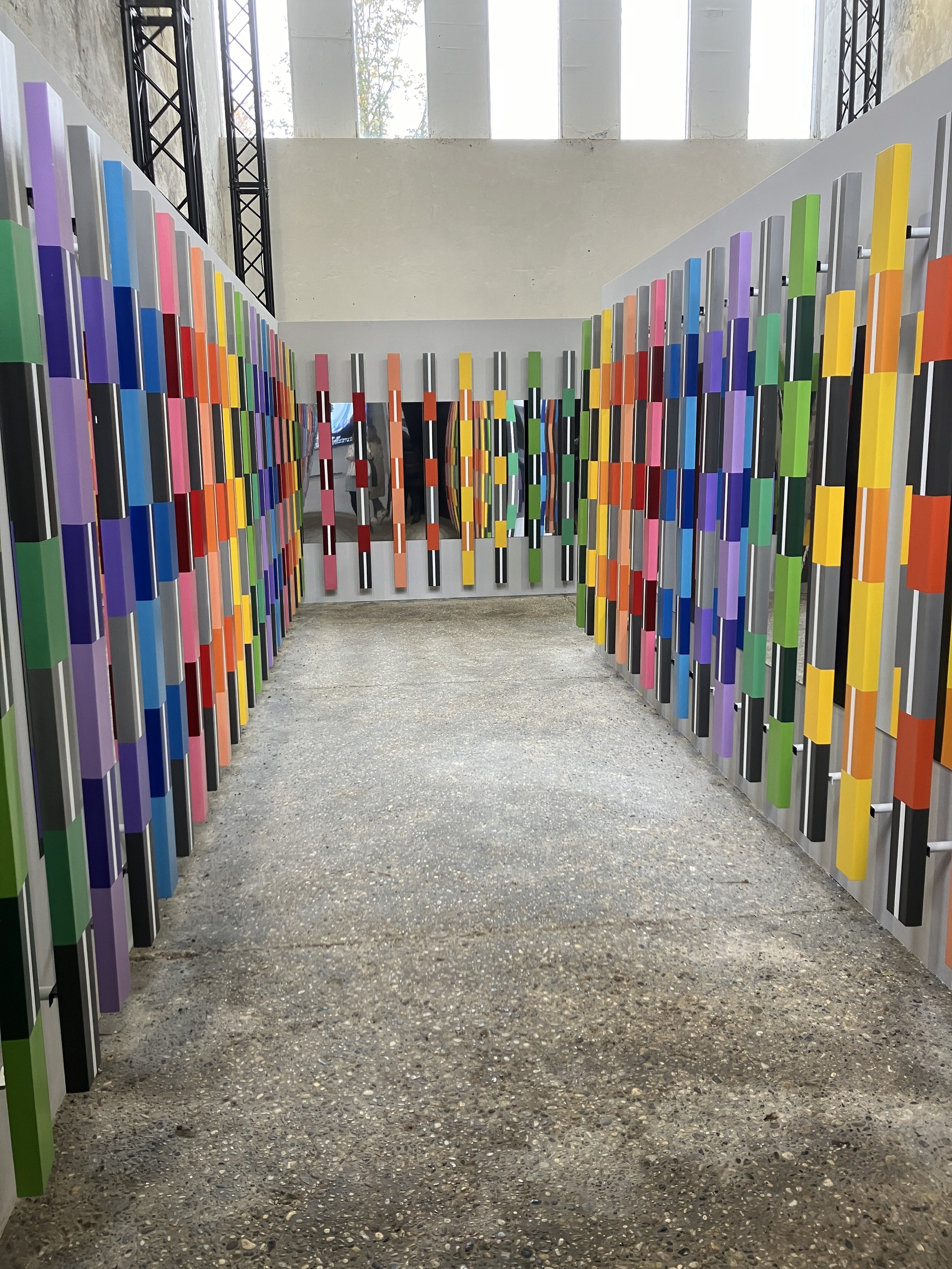Making space for strangers: La biennale 2024
I initially made the mistake of looking for specific outcomes from my visit to this year’s biennale. A couple of hours in, I remembered that I have previously found most inspiration from absorbing what the exhibition and pavilions have to tell me, and letting a picture emerge. So, here’s what I found.
This year’s theme is ‘Stranieri Ovunque / Foreigners everywhere’ drawn from the work of the collective Claire Fontaine. The varied etymologies and translations of ‘stranieri’ allow this to speak to ‘outsider’ and folk art, indigenous and queer artists, as well as multiple stories of migration, colonisation and migrant experiences. I can probably count on both hands the number of artists whose names were known to me before my visit, so it was a rich and educational experience.
A few things quite obviously emerge from this focus. There was a greater variety of textile art, and fewer film works than the biennale often sees. I was particularly drawn to the fluid colours of woven works by Claudia Alarcón and Silät collaborators, and the embroidered imagined herbarium images of Anna Zemánková, both in the Arsenale exhibition. A number of artists focused on the role of images in European colonial projects. Sandra Gamarra Heshiki’s ‘Migrant Art Gallery’ for the Spanish pavilion unpicked an encyclopaedia of artworks and collections here, as did Fred Kuwornu’s compelling documentary film ‘We were here’. I also found myself drawn into Pablo Delano’s ‘The Museum of the Old Colony’ that uses photographs and artefacts to reflect on the Puerto Rican experience as a colony of the USA.
What struck me, more surprisingly, this year, was the approach to use of space, inside and outside the pavilions, that I observed for a number of national presentations. A notable number of artists chose to expand their work through and outside of the front of the pavilion, pushing at the physical and institutional boundaries. For Germany, Ersan Mondtag built a pile of earth against the front of the pavilion, while Lap-See Lam expanded his bamboo scaffold structure out of the Nordic pavilion to terminate in a monumental dragon’s head. For Canada, Kapwani Kiwanga covered the outside of the pavilion in seed beads, while Ota Hudec for the Slovak Republic and Jeffrey Gibson for the USA both extended their space through painting the pavilion facade, and adding a layer of sculpture. John Akomfrah and Julien Creuzet similarly both extended their film works onto large screens on the front of the British and French pavilions respectively.
By contrast, a number of pavilions where historically the presentation has focused on a group of artists presenting smaller works, this year offered a strikingly emptier space focused on a more sensory experience. Thus, the Canadian presentation extended the coverage of seed beads throughout the inside of the pavilion, interacting with a small number of sculptures to comment on the materials/commodities so entwined in colonial histories. For the Korean pavilion, Koo Jeong A presented a new wooden floor and simple sculptures to focus on a collaborative evocation of Korea through ‘olfactory memories’.
Perhaps, then, this year space spoke implicitly to the theme as well. The biennale as a whole consciously intended to open a space for new artists, but the pavilions also critiqued and challenged the space of the nation state, with these presentations that extended outside of, or internally opened up, the historic pavilions.


































